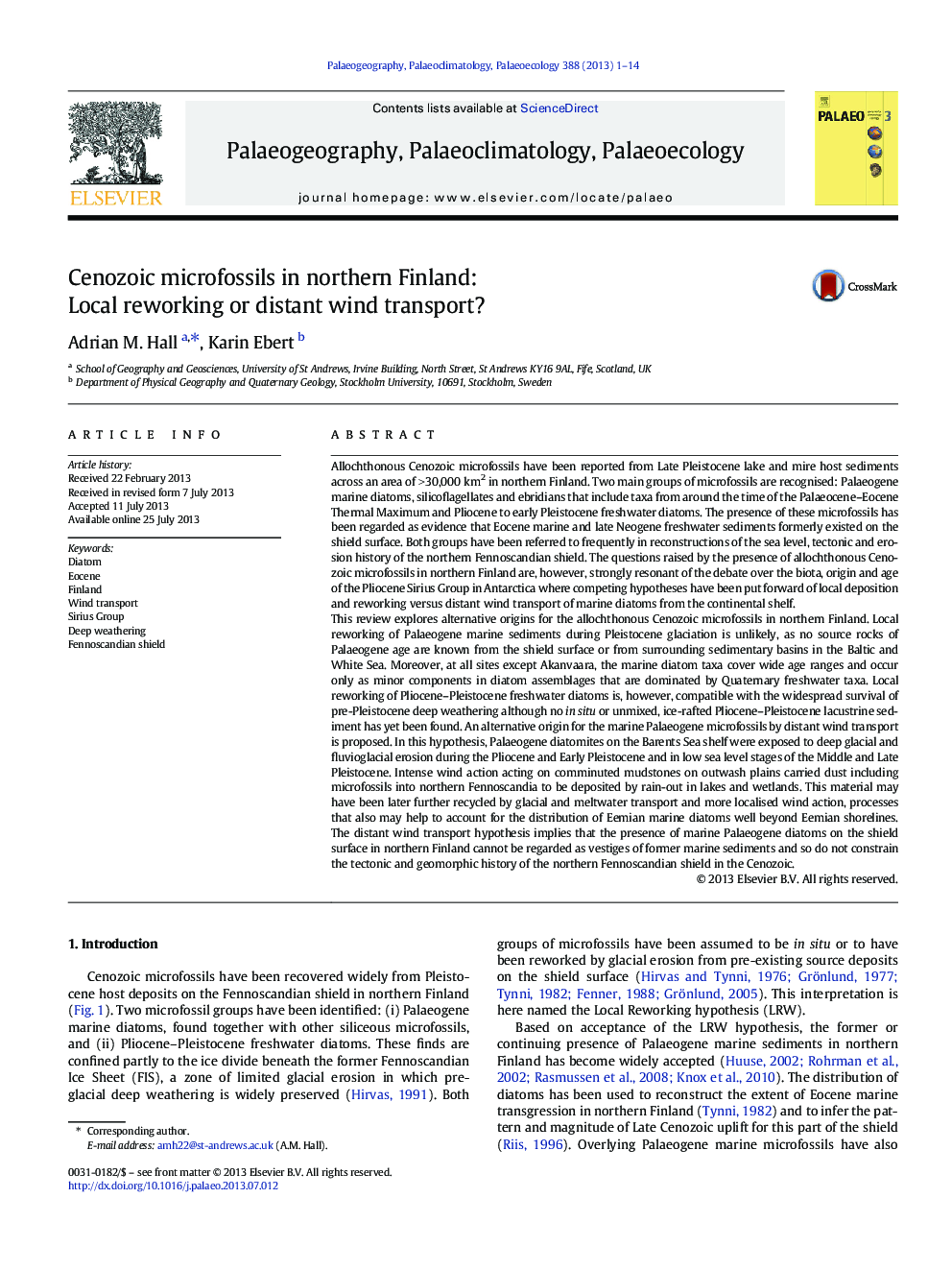| Article ID | Journal | Published Year | Pages | File Type |
|---|---|---|---|---|
| 6350216 | Palaeogeography, Palaeoclimatology, Palaeoecology | 2013 | 14 Pages |
Abstract
This review explores alternative origins for the allochthonous Cenozoic microfossils in northern Finland. Local reworking of Palaeogene marine sediments during Pleistocene glaciation is unlikely, as no source rocks of Palaeogene age are known from the shield surface or from surrounding sedimentary basins in the Baltic and White Sea. Moreover, at all sites except Akanvaara, the marine diatom taxa cover wide age ranges and occur only as minor components in diatom assemblages that are dominated by Quaternary freshwater taxa. Local reworking of Pliocene-Pleistocene freshwater diatoms is, however, compatible with the widespread survival of pre-Pleistocene deep weathering although no in situ or unmixed, ice-rafted Pliocene-Pleistocene lacustrine sediment has yet been found. An alternative origin for the marine Palaeogene microfossils by distant wind transport is proposed. In this hypothesis, Palaeogene diatomites on the Barents Sea shelf were exposed to deep glacial and fluvioglacial erosion during the Pliocene and Early Pleistocene and in low sea level stages of the Middle and Late Pleistocene. Intense wind action acting on comminuted mudstones on outwash plains carried dust including microfossils into northern Fennoscandia to be deposited by rain-out in lakes and wetlands. This material may have been later further recycled by glacial and meltwater transport and more localised wind action, processes that also may help to account for the distribution of Eemian marine diatoms well beyond Eemian shorelines. The distant wind transport hypothesis implies that the presence of marine Palaeogene diatoms on the shield surface in northern Finland cannot be regarded as vestiges of former marine sediments and so do not constrain the tectonic and geomorphic history of the northern Fennoscandian shield in the Cenozoic.
Related Topics
Physical Sciences and Engineering
Earth and Planetary Sciences
Earth-Surface Processes
Authors
Adrian M. Hall, Karin Ebert,
